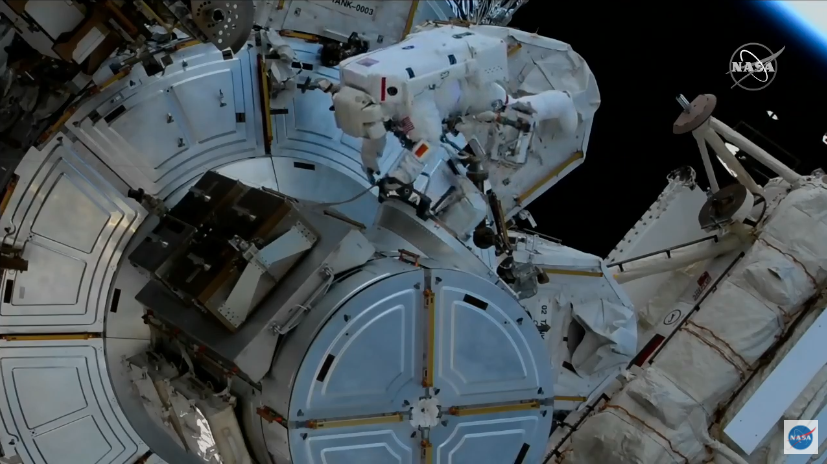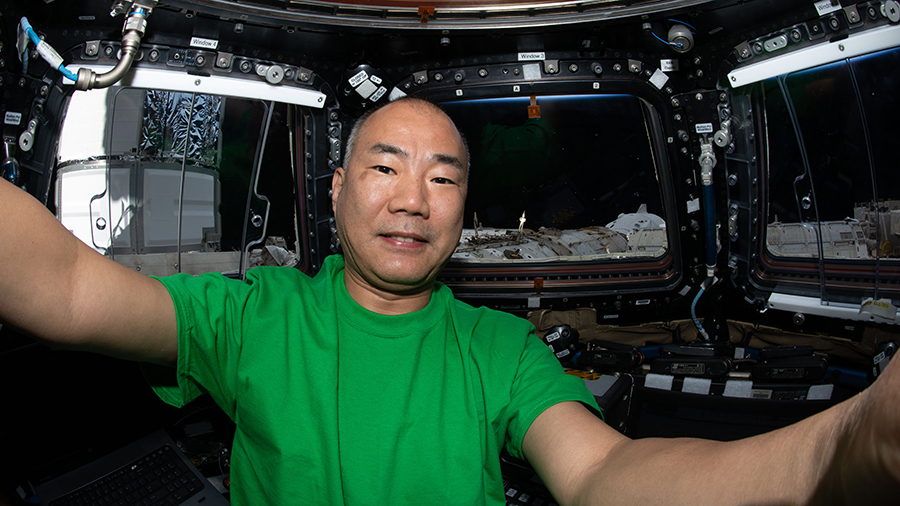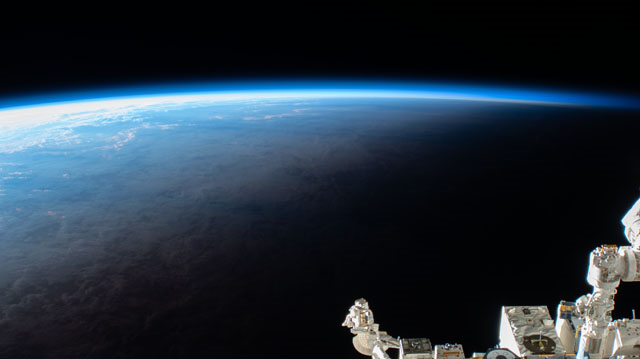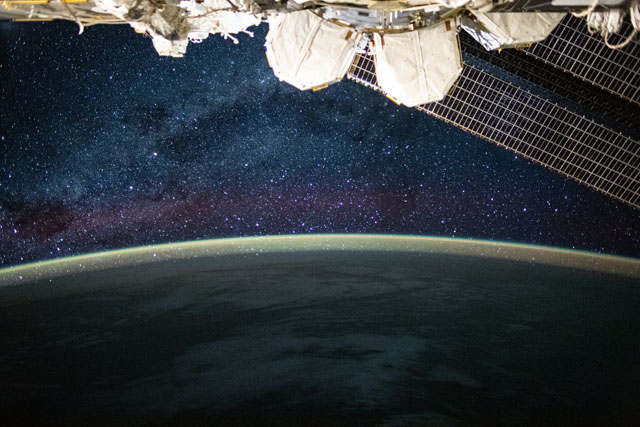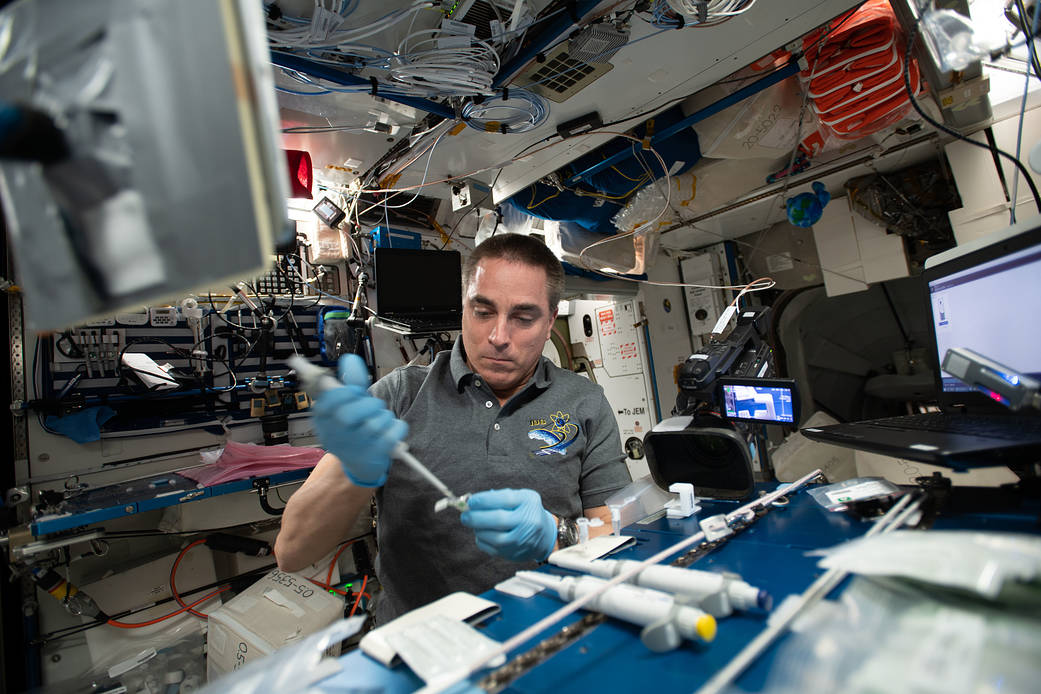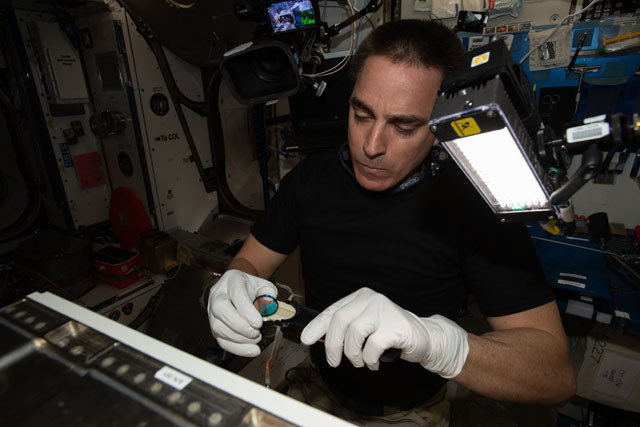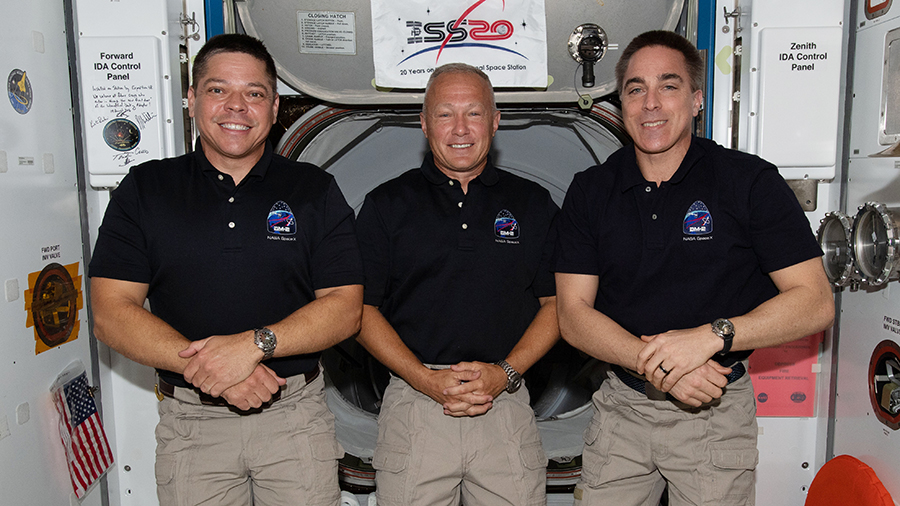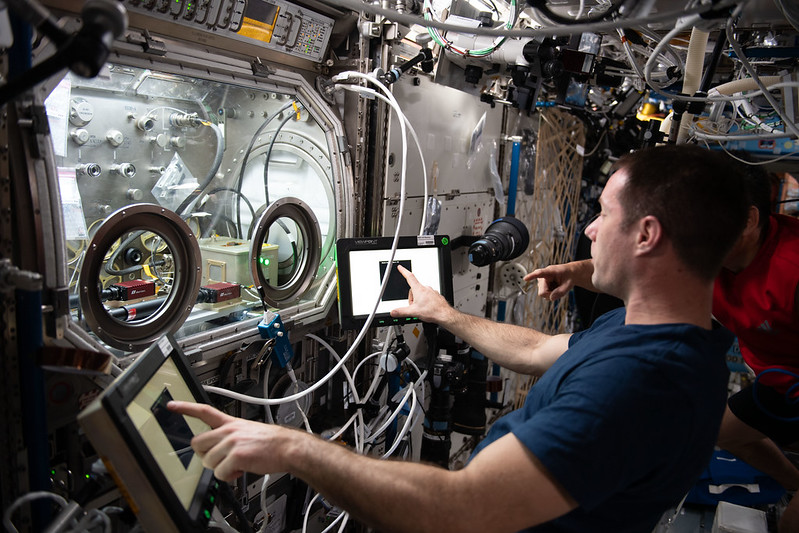
Today, the Expedition 65 crewmates aboard the International Space Station continued down their checklists in preparation for the next day’s planned mission activities — to include a port-relocation maneuver and the launch of a new module that will replace the Pirs Docking Compartment. Pirs has only a few days left in its 20-year length of service to the orbiting outpost, as it will soon be jettisoned, along with the Progress 77 cargo craft, on Friday for a destructive re-entry in Earth’s atmosphere.
Investigations in materials science continued in between maintenance and mission prep, with NASA astronaut Megan McArthur conducting runs of the Investigating the Structure of Paramagnetic Aggregates from Colloidal Ellipsoids, or InSPACE-4, study. Using magnetic fields, the experiment studies the assembly of tiny structures from colloids and their mechanical responses to interaction with light and heat.
ESA (European Space Agency) astronaut Thomas Pesquet, meanwhile, worked with ULTRA Tweezers, an experiment that aims to gain understanding of an acoustic phenomenon theorized more than 30 years ago. The microgravity environment inherent to station will be particularly helpful in validating use of ultrasonic tweezers, or non-audible sound waves, to exert force on the objects they encounter.
Ongoing medical studies in eye health involved many of the crew members, with Japan Aerospace Exploration Agency astronaut Akihiko Hoshide and McArthur setting up the fundoscope for ocular examinations. These exams are remotely guided from medical experts on the ground and obtain images of the retinol surface, seeking any detectable changes to the astronauts’ eyes and vision.
Maintenance and housekeeping was a priority for another contingent of astronauts and cosmonauts. Flight Engineer Shane Kimbrough continued an install with the newly deployed toilet system in Node 3 while his fellow crew member, NASA astronaut Mark Vande Hei, obtained a potable bus sample from the Water Recovery System. The Russian cosmonaut duo of Pyotr Dubrov and Oleg Novitskiy continued with cargo transfer activities.
Many tasks were a prelude to the port relocation happening Wednesday, with Hoshide going over the final configuration, McArthur calibrating the Crew Dragon handheld gas detectors, and Pesquet reorganizing supplies in the Crew Dragon spacecraft, dubbed Endeavour.
Tomorrow, Kimbrough, McArthur, Hoshide, and Pesquet will board Endeavour about 4:30 a.m. EDT and undock from the forward port of the station’s Harmony module at 6:45 a.m. The spacecraft will dock again at the station’s space-facing port a short time later, at 7:32 a.m. This fly-around will free up Harmony’s forward port for the docking of Boeing’s CST-100 Starliner as part of NASA’s Boeing Orbital Flight Test-2 (OFT-2) mission.
On July 21, catch the port relocation first on NASA Television, the NASA app, and the agency’s website. Live coverage begins at 6:30 a.m. EDT. Four hours later, at 10:30 a.m., launch coverage begins for the Multipurpose Laboratory Module. Named Nauka, after the Russian word for “science,” the newest addition to station will hitch a ride to space on a three-stage Proton rocket from the Baikonur Cosmodrome in Kazakhstan.


